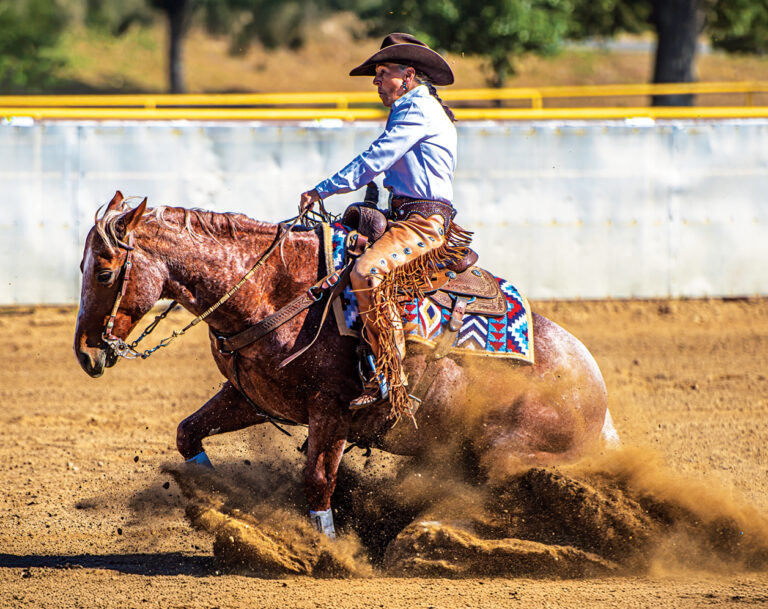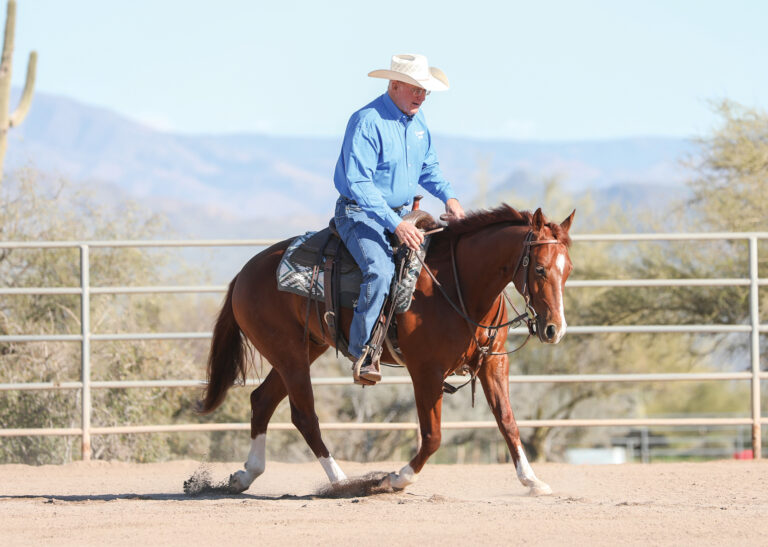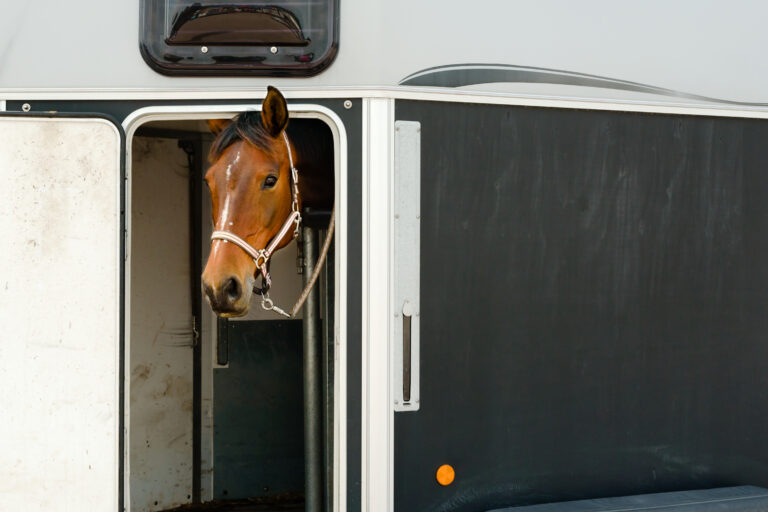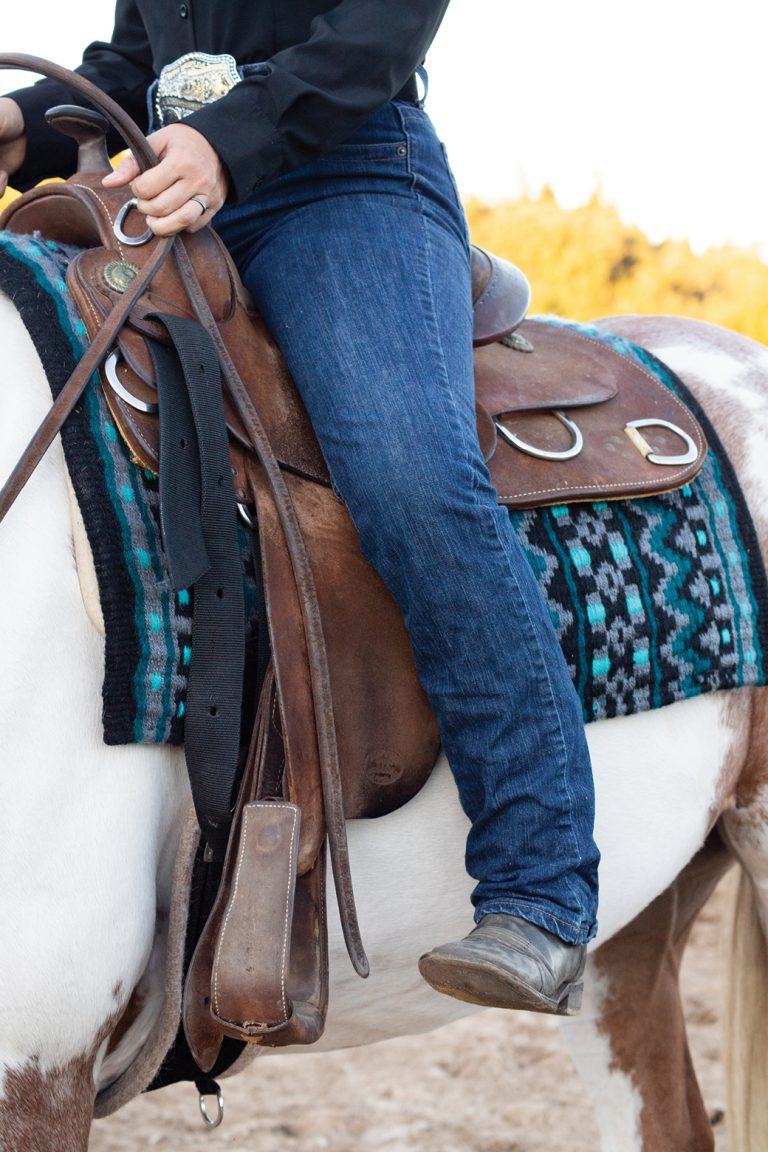Falling is never fun, but nastiest of all is getting hung up in a stirrup. To gather practical tips on surviving and avoiding this worst-case scenario, we talked to two horsewoman with real-world experience.
[READ: 14 ESSENTIAL EQUINE-SAFETY TIPS]
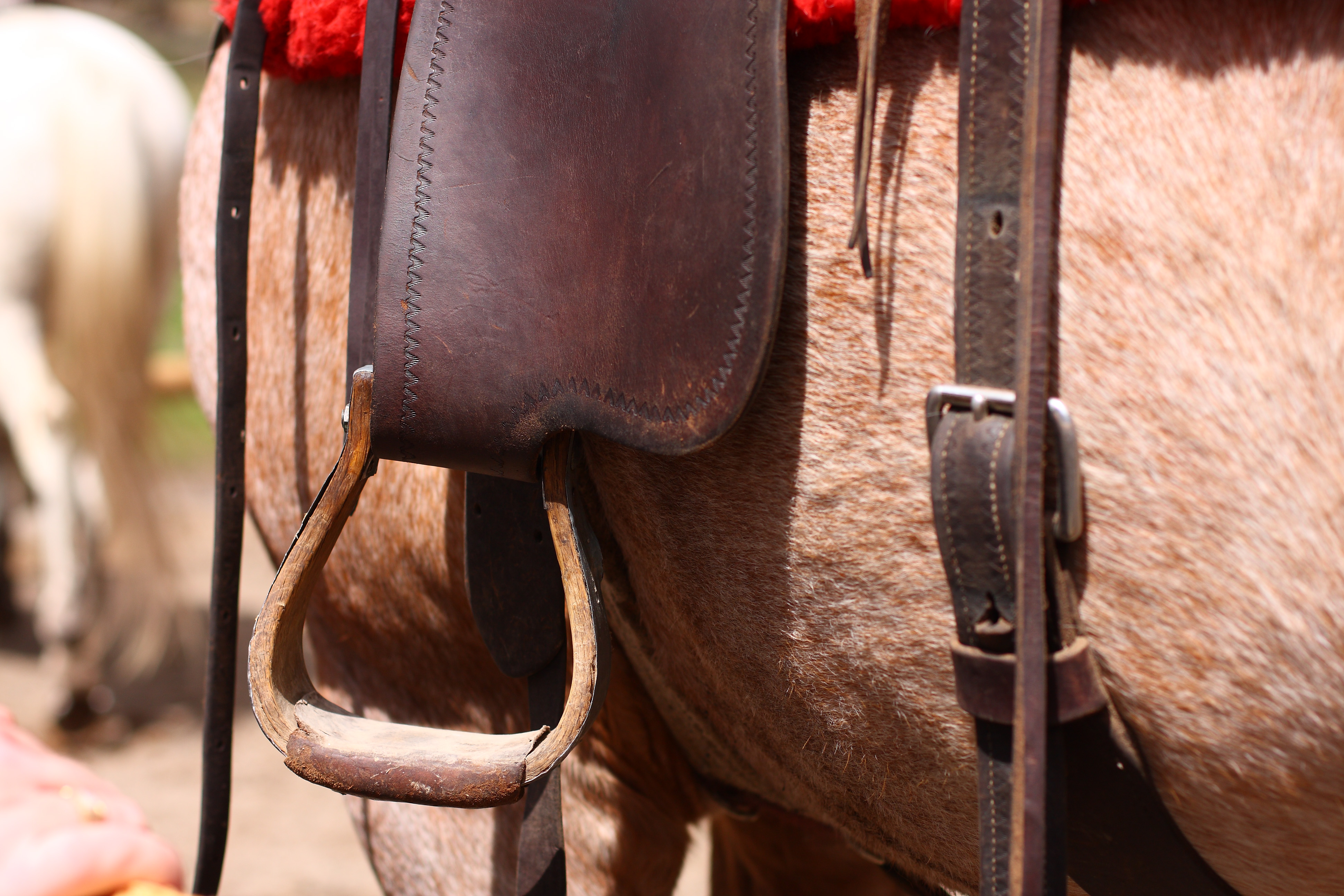
Pepper Fewel oversees the safety of guests riding at her Cherry Wood Bed, Breakfast, and Barn near Yakima, Washington. Trainer Sandy Collier of Buellton, California, is herself the survivor of a hang-up.
Their tips and other information will tell you not only what to do if the worst happens, but also how to keep it from occurring in the first place.
HOW HANG-UPS HAPPEN
A foot can slip all the way through a stirrup if the stirrup is too large and/or the rider has improper footwear—both preventable scenarios. But the most common way a hang-up occurs is when the foot simply gets wedged in the stirrup while the rider’s body weight is below the level of the stirrup, so that downward pressure keeps the foot from slipping free.
Think of how your left foot is positioned in the stirrup when you go to mount from the ground: your toe is up, lodged against the top of the stirrup, while your arch is pressed against the stirrup’s bottom. If your horse moves and you lose your balance at this point, your foot will be stuck that way in the stirrup, because your body weight below the stirrup, pulling down, will keep it lodged.
The same can happen if you come off your horse in such a way—usually falling backwards—that one of your feet becomes similarly wedged, with the toe up and the arch pressed against the bottom of the stirrup. Again, the weight of your body hanging down is what keeps the foot stuck in the stirrup.
TO GET YOURSELF FREE
If you find yourself hung up this way, you can free your foot by twisting it, and you do that by rolling your body toward your horse.
“It sounds counterintuitive, but it works,” explains Pepper, whose wranglers demonstrate the maneuver before every trail ride. “As you turn onto your stomach, rolling in toward your horse’s flank, your foot will twist in the stirrup and release from it.”
PREVENTIVE MEASURES
Boots. Cowboy boots’ original features—smooth leather soles, distinct heels, open tops—were intended specifically to prevent hang-ups and to allow the boot to come off the foot if the boot did get trapped in the stirrup. Modern changes to this design (for fashion, comfort, and convenience) can reduce boots’ safety quotient.
“I don’t allow anyone to ride at my place in lace-up boots,” says Sandy, who was bucked off and dragged until her regular-style boot came off her foot. “If I’d been wearing lace-ups, which just don’t come off, I’d probably still be getting dragged around.”Thick, non-leather waffle soles may not slip free of the stirrup as easily as smooth leather, and of course sneakers, hiking boots, and the like are always inappropriate for riding.
Stirrups. The part of the stirrup where the foot rests should be about 1 to 1-1/2 inches wider than your boot. More, and your foot may be able to slip through. Less, and your foot may more easily become wedged in a fall. (For extra insurance, consider safety stirrups.) Children should have stirrups of a size appropriate for their boots, or else have tapaderos (covers that prevent the foot from sliding forward) over their stirrups.
Foot placement. The ball of your foot should rest on the stirrup. Shoving your feet all the way “home,” so that the stirrup is against your heel, is less safe in the event of a fall.
On/off savvy. Mounting and dismounting are vulnerable moments, so use a safe, solid mounting block to avoid that foot-up, body-down position. In dismounting, drop both stirrups first, or at least slip your left stirrup toward your toe before swinging off.
The safety ‘cheek.’ “Cheeking,” used for extra security when mounting or dismounting a fractious horse, involves grasping the cheek piece of the bridle and drawing the horse’s head around to your knee; this immobilizes him while you swing up or down. “It’s great if you have to get off a young or nervous horse in a hurry,” says Sandy.
‘Whoa,’ etc. Teach your horse to stand stock still during mounting and dismounting, and make sure he knows what “whoa” means at all times. Hobble training and/or ground driving are also beneficial, as they can help your horse feel less frightened and easier to stop in the event he finds something—that is, you—dragging next to him.
Be smart. Never incline back on your horse’s rump. When ducking to miss low branches, lean forward, not backward, to avoid getting swept off in a vulnerable position.
[READ: THE SAFE START BLOG]
SAFETY STIRRUPS—WORTH IT?
Western stirrups designed to come off or release the foot in the case of a fall are now available. Examples to check out:
- STI Breakaway Stirrups; breakawaystirrups.com.
- Western Safety Aluminum Oxbow Stirrups; chicksaddlery.com.

